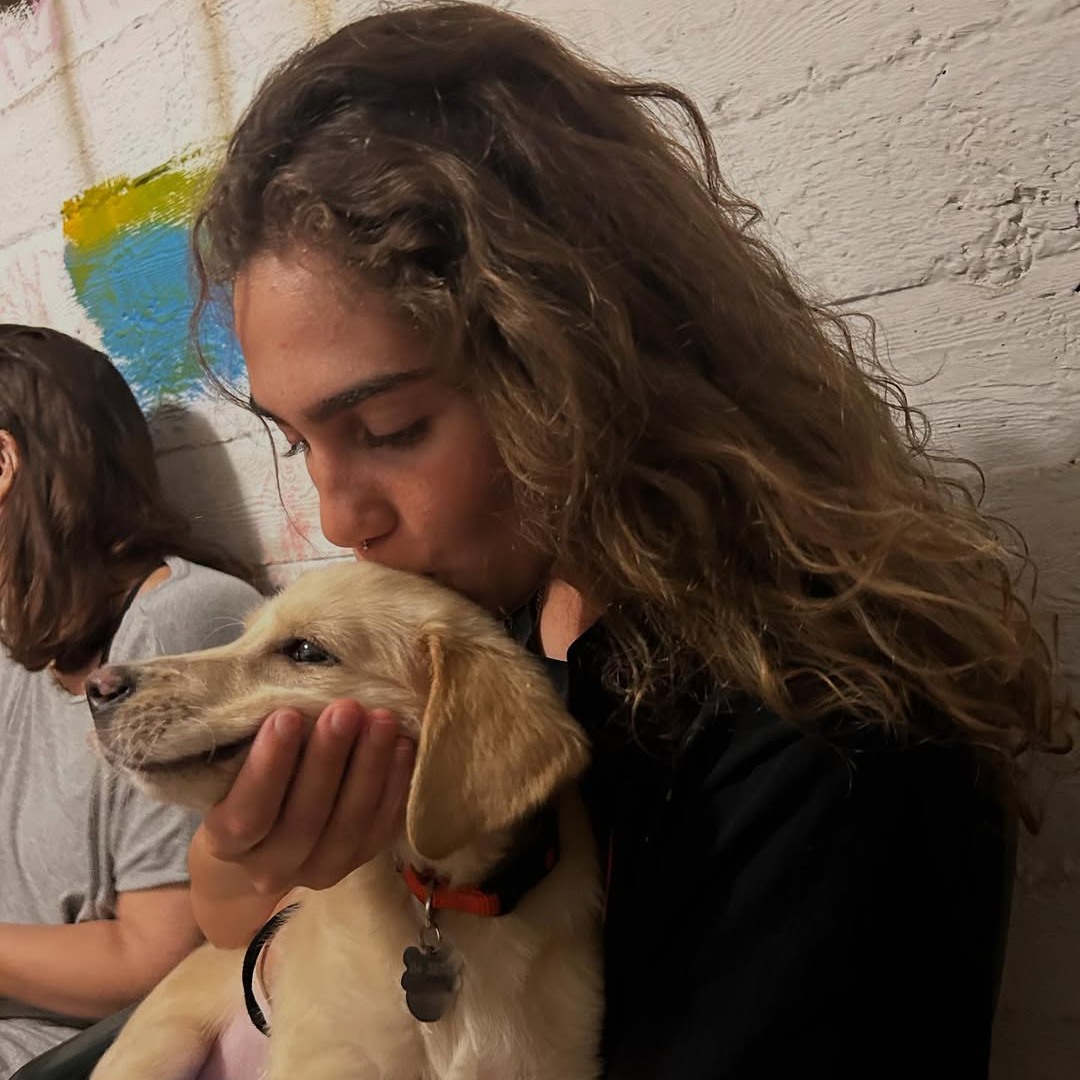When Emergency Strikes: The Evolving Role of Guide Dogs in Times of Crisis
On regular days, a guide dog is a full partner — enabling safe mobility, fostering independence, and offering inner calm.
But in times of emergency — when sirens sound, booms echo, and families spend extended hours in shelters — everything takes on a completely different meaning.
Clients of the Israel Guide Dog Center have described complex, sometimes harrowing situations. They must rush to shelters, often in the middle of the night. These spaces are already crowded with dozens of stressed individuals — small children, elderly people, families in shock. In these intense and unpredictable conditions, the guide dog — usually calm and in control — is suddenly exposed to unfamiliar noise, tight quarters, and emotionally charged environments.
Equally important is how people in the shelter respond to the dog. In their own distress, they may turn to the dog for comfort — wanting to pet, talk to, or simply be near it. Sometimes, this is a beautiful moment of connection: the dog is calm, and the person with blindness or PTSD welcomes the interaction.
But sometimes, it’s absolutely not the right moment.
The dog may be tense. The person may need silence and space. And any uninvited interaction can disrupt a fragile emotional balance.
Some try to explain gently: “This is a working dog. Please avoid touching.” But in a noisy shelter, this message doesn’t always carry. And not everyone has the emotional bandwidth to manage themselves, their dog, and the reactions of others — all while sheltering from potential danger.
And yet, we are witnessing remarkable stories of adaptation.
Some dogs are developing new and effective behaviors, responding to emergency routines with understanding and even calm leadership. One client shared how her dog now waits quietly by the door when it hears a siren — knowing that a trip to the shelter (and a well-earned treat) is next. Another described how her dog has learned to recognize the alert tone from a mobile phone and will immediately approach her, offering grounding support before a word is spoken.
These new routines are building positive associations. The dogs are learning to recognize patterns, respond with steadiness, and serve as emotional anchors during moments of acute anxiety.
At the Israel Guide Dog Center, we support this learning as much as we can from afar. Since the Home Front Command’s emergency guidelines currently do not allow home visits, our team remains in close contact with clients — offering guidance by phone and adapting to their needs in real time.
Still, significant public challenges remain.
There are no clear municipal guidelines on how to adapt shelters for people with assistance dogs. Public awareness of when it is — and isn’t — appropriate to interact with a working dog is still lacking. There is an urgent need for shared dialogue — one that respects both emotional needs and accessibility, without judgment or fear.
We are not asking for special treatment.
We are asking for recognition of a partnership:
A person and a dog, working together in daily life — and in times of crisis.
Written by Erez Barkai, IGDCB Director of Community Relations and guide dog client.
